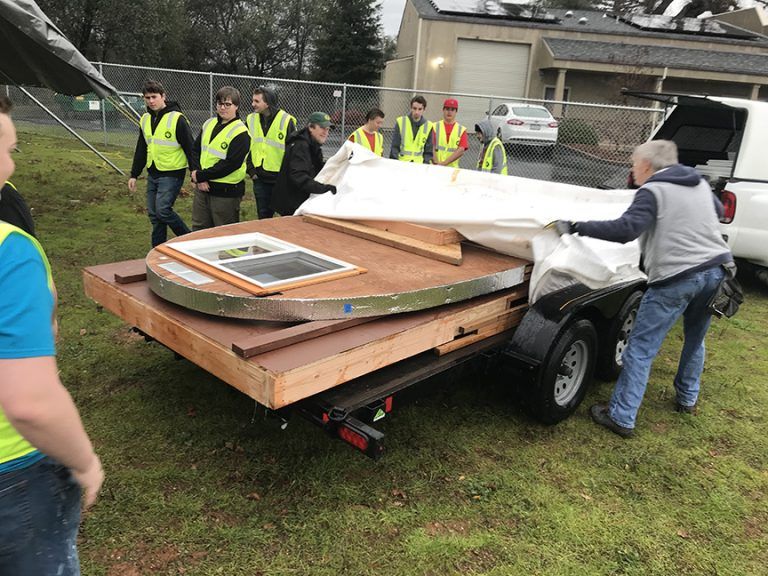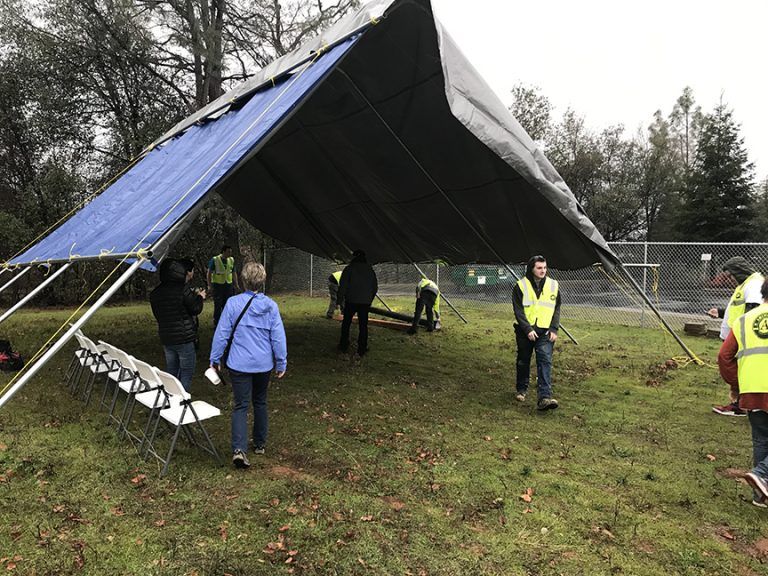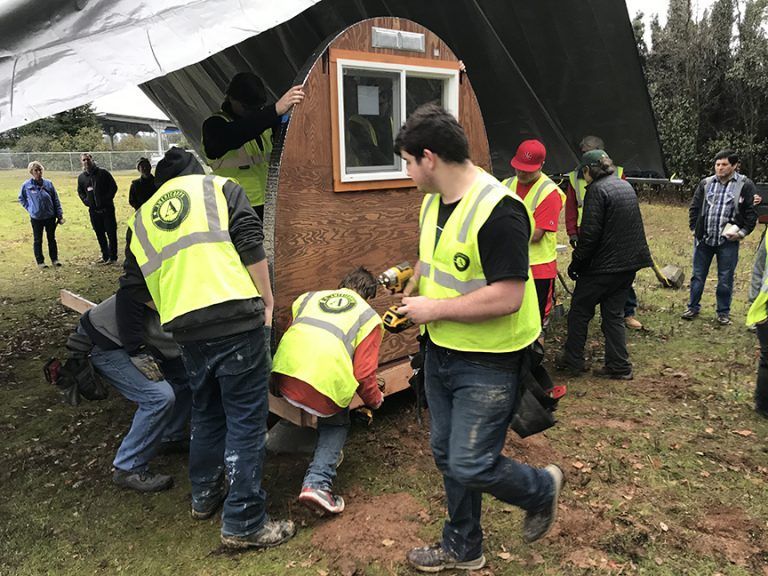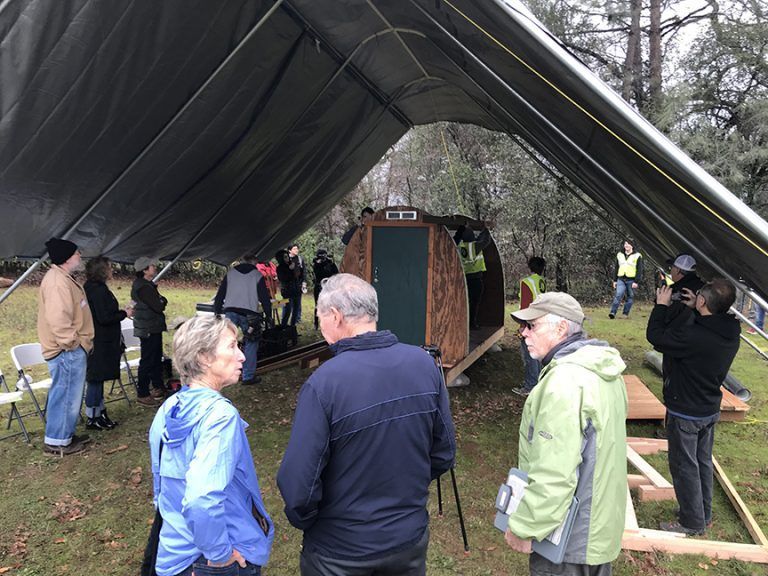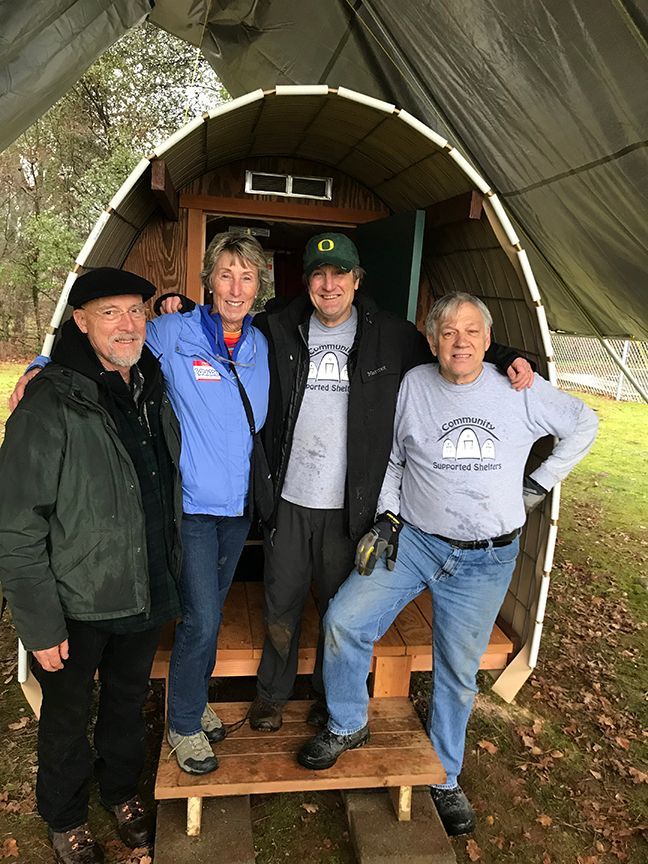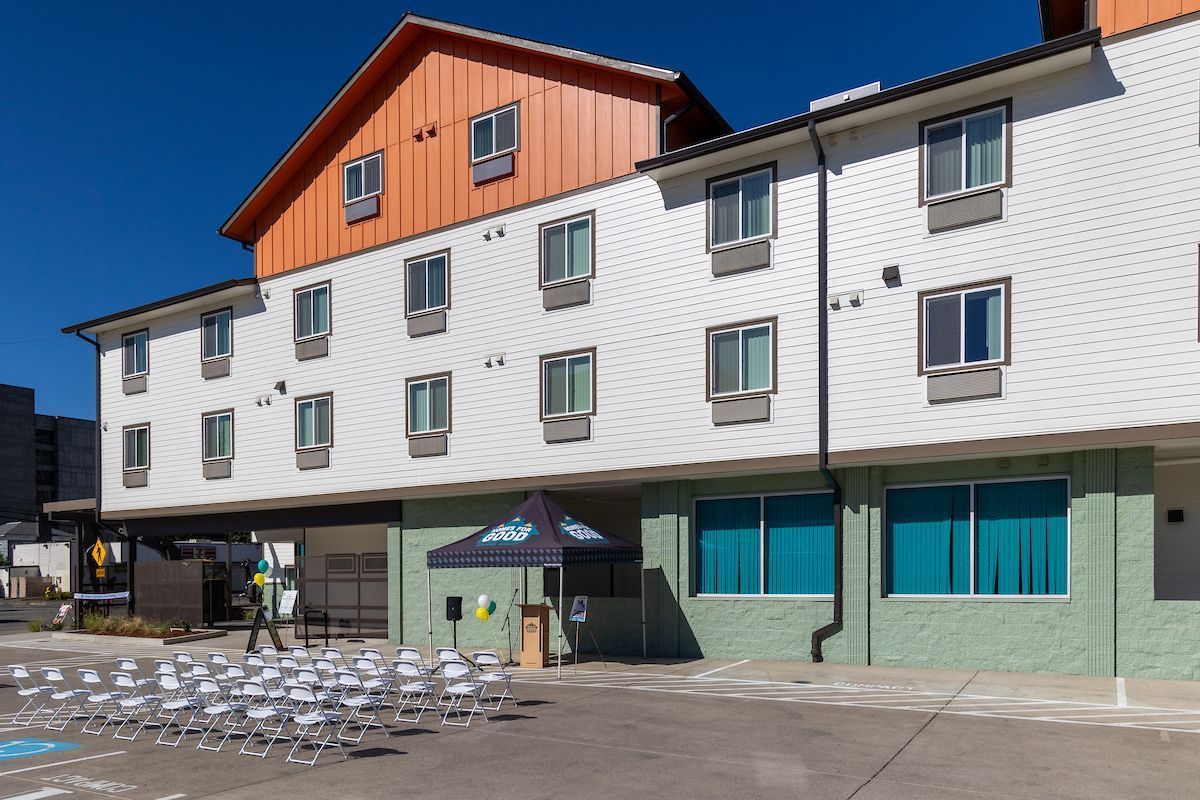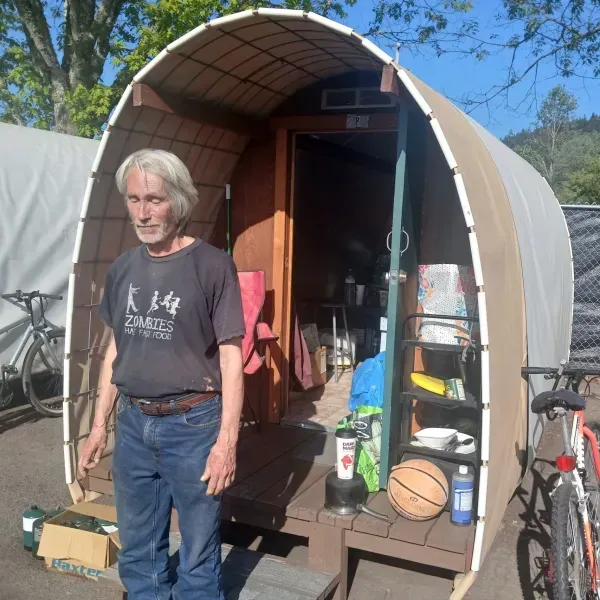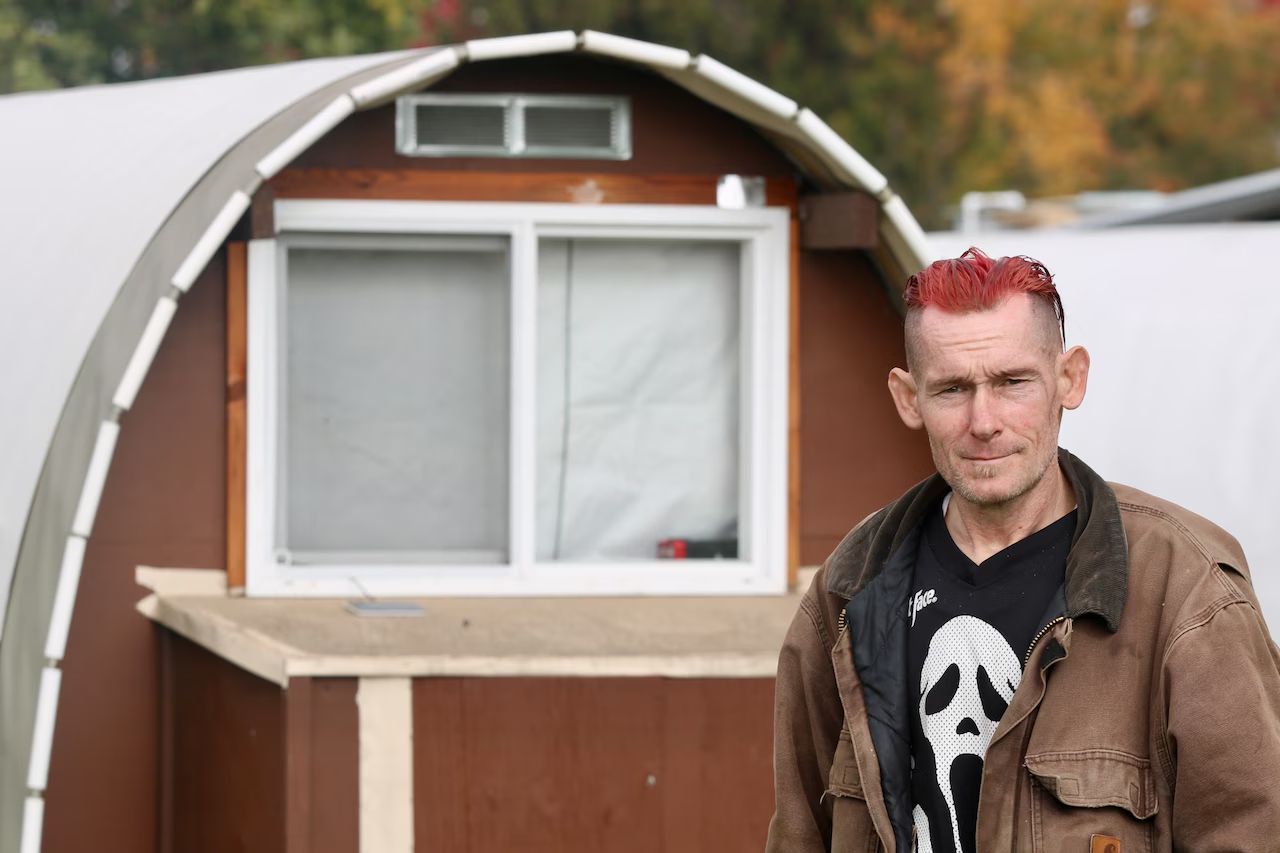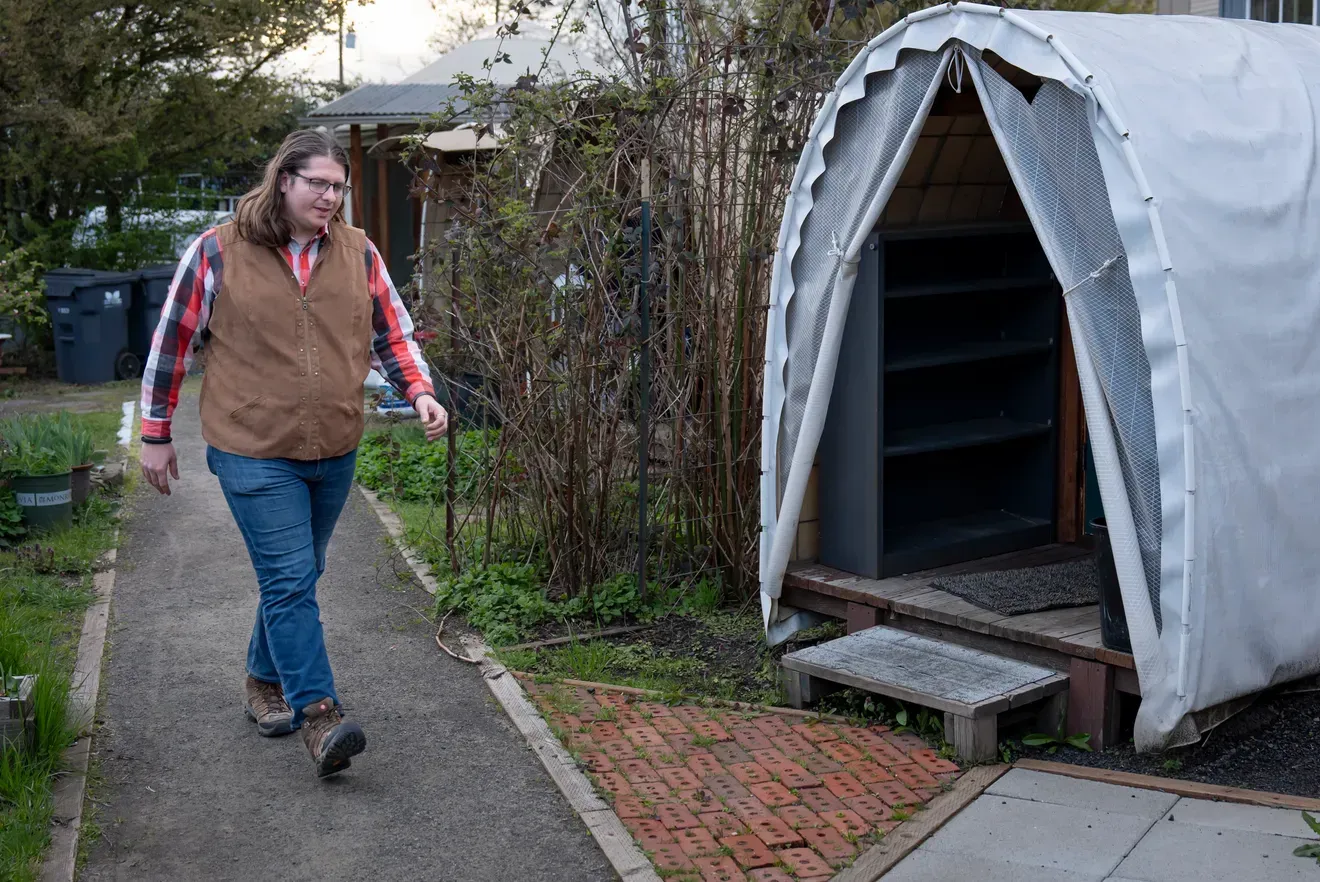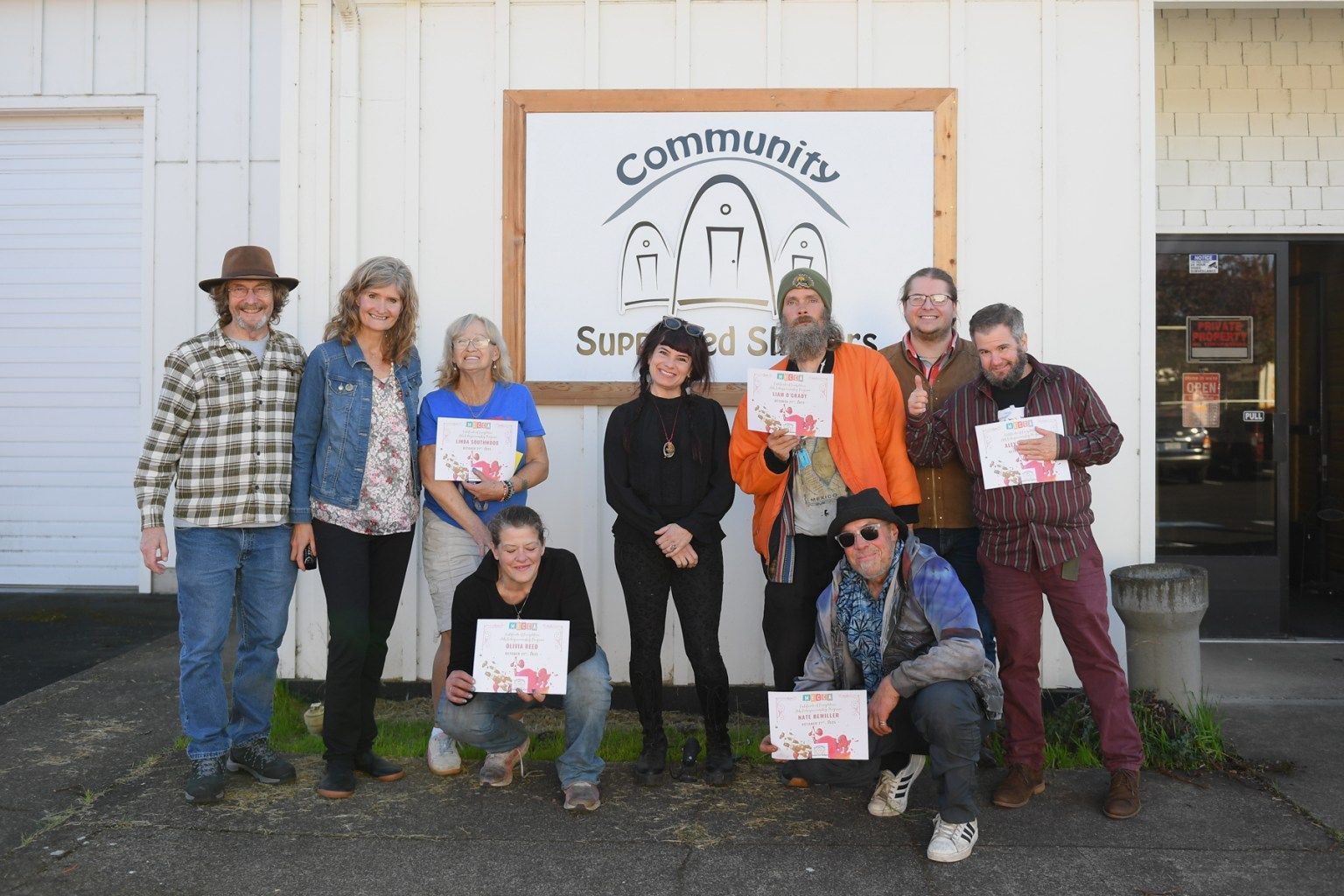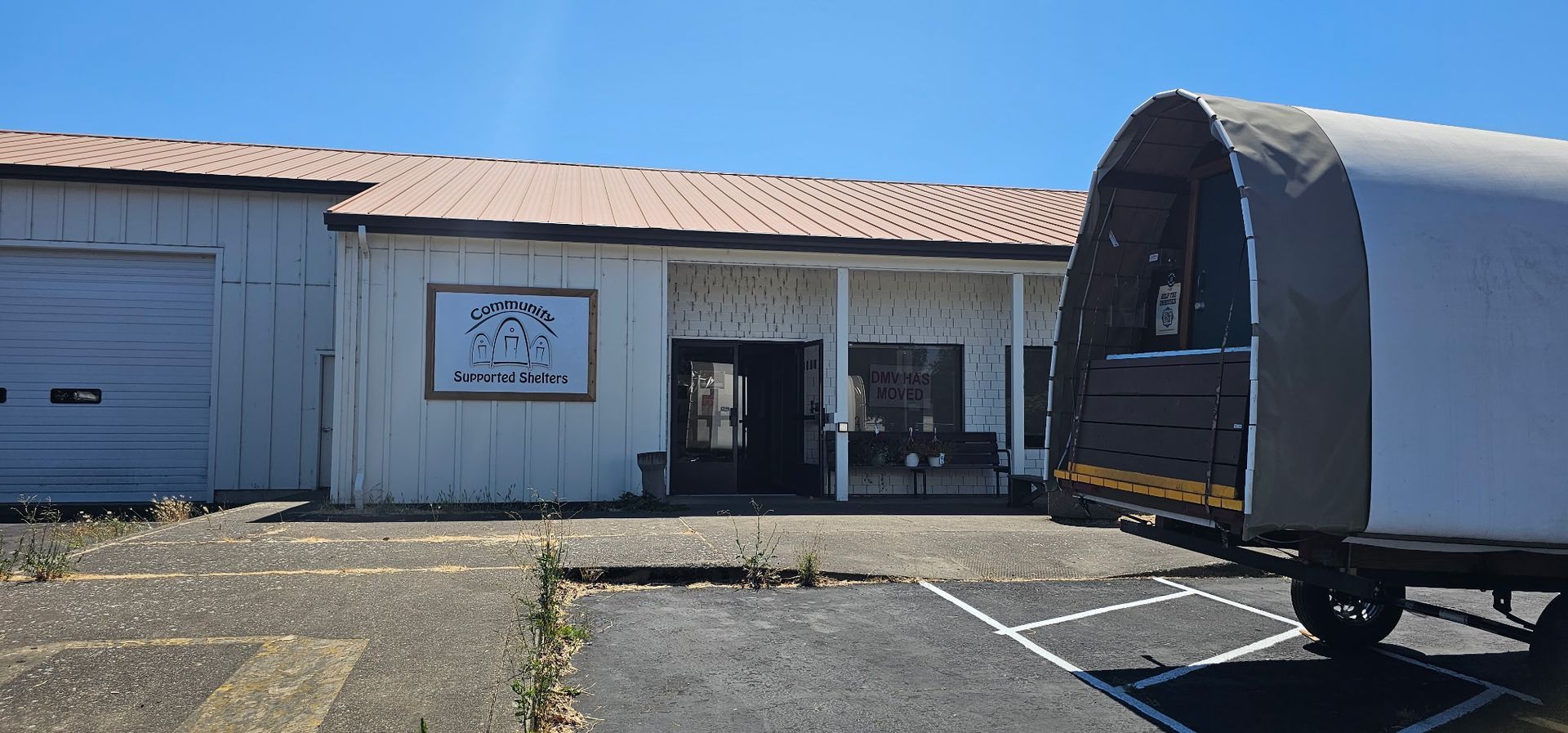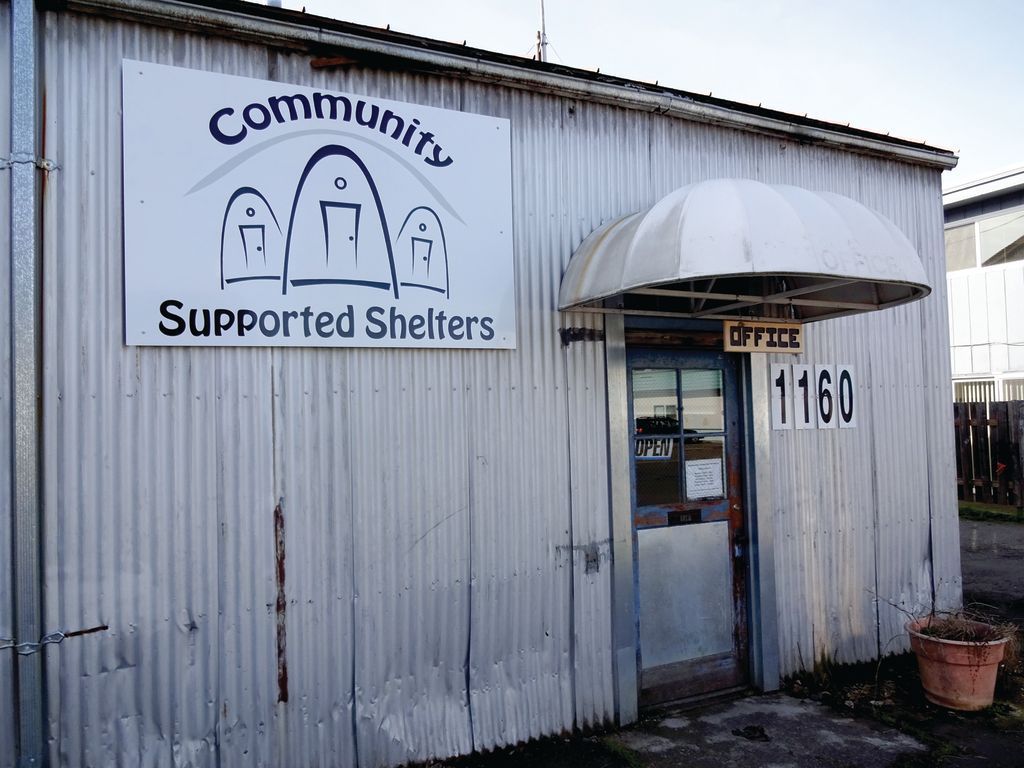The day of the build was rainy and windy. But Lane and some of his students had covered an area about 20 feet wide by 30 feet long with tarps that peaked about 20 feet high, supported by metal tubing and ropes, shielding the building process and the gathering of people from the community who came to watch it—a key element of the event—from the worst of the weather.
Shortly after 9 a.m., students in bright yellow vests streamed from the school building and set right to work unloading the truck and trailer that had carried the Hut components and tools from Eugene. Divided loosely into two groups, taking turns doing hands-on work and observing, some students dug holes for the circular pier blocks of the foundation, while others, demonstrating the strength of their young backs, muscled the blocks into place. The build was on. The CSS Hut Crew volunteers, well past their days of strong backs, stepped back to guide the students through the rest of the foundation and putting the two-piece floor together. Three or four wielded cordless drivers to attach the components to one another, and a couple used tape measures to make sure the floor sat properly on the foundation.
A crew moved eagerly to get the back Hut wall, the next component in the process, but a pause was called. The build was ahead of schedule. Media representatives and community members were scheduled to arrive at 10 and everyone wanted them to see the walls put in place, when the Hut literally takes shape.


